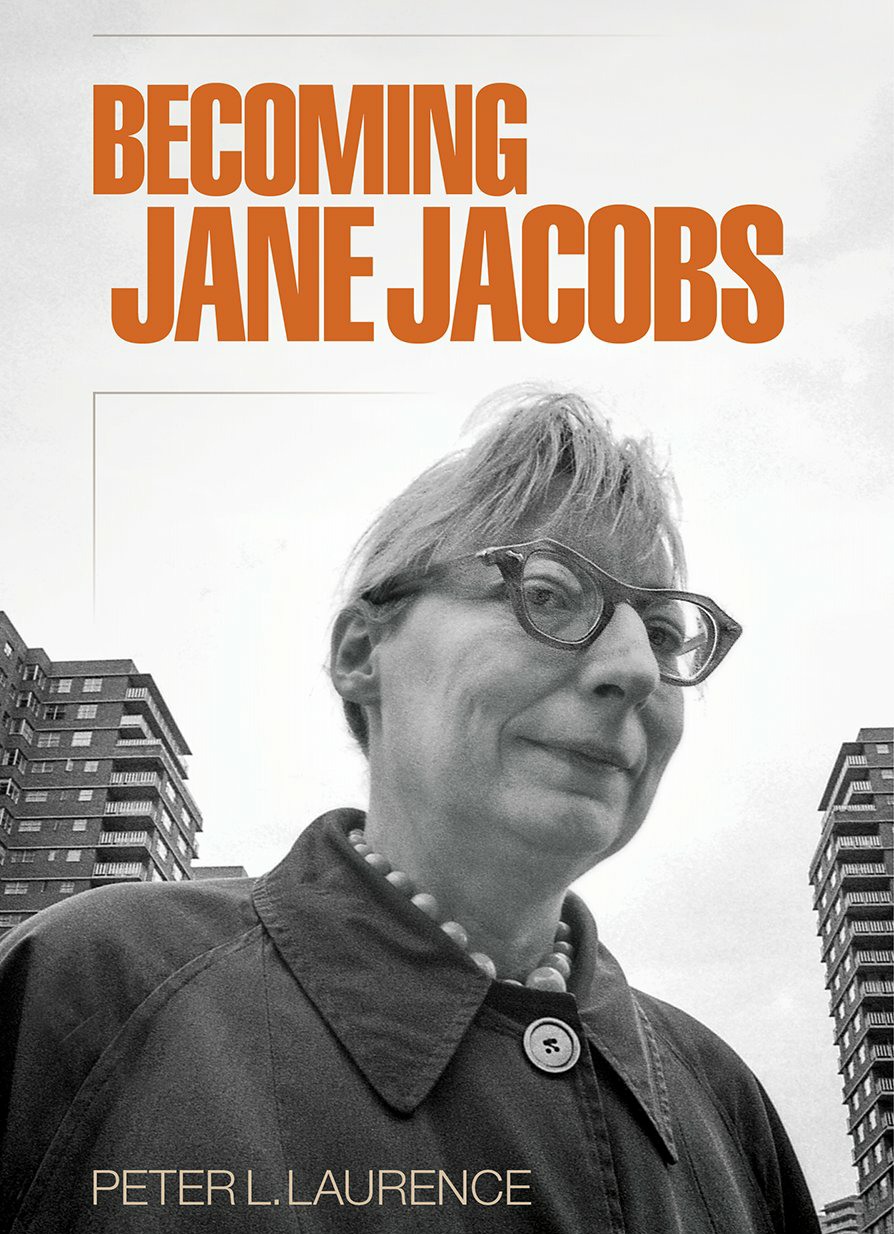Becoming Jane Jacobs

|
| Becoming Jane Jacobs, Peter L Laurence, University of Pennsylvania Press, Philadelphia, 2016, 365 pages, 50 black and white illustrations. |
A man with a cold went to the doctor, demanding a cure. When told there was no cure for the common cold, the doctor advised sleeping with the windows open, although it was winter, and letting the cold air rush through. The patient retorted: ‘I might get pneumonia!’ ‘Exactly!’ the doctor replied, and, glancing at his medicine cabinet, said: ‘We know how to cure that!’
Jane Jacobs told this story in 1957 as a parable of urban renewal in New York. The city authorities should have seen their job as being preserving and improving healthy neighbourhoods, she wrote, but they did not know how to do that. So they came up with a much more drastic, and simple, remedy: redevelopment. The effect was that people who had lived in slums often ended up moving to slums elsewhere, and the huge housing projects soon failed to provide good places to live for anyone.
A few years ago the Urban Design Group asked its members to name the person, living or dead, whose contribution to urban design and planning they most admired. A large majority chose Jane Jacobs (1916–2006), the campaigner and writer best known for her 1961 book ‘The Death and Life of Great American Cities’. Jacobs was neither an architect nor a planner, and she had no university education. Who was she?
Peter L Laurence answers that question with this magnificent intellectual biography of the first half of Jacobs’ life. As an architectural writer, based at that time in New York, she at first subscribed to the beliefs of many architects and planners in modernism and large-scale redevelopment. Gradually, though, her examination of the places that were being built persuaded her that contemporary planning was fatally flawed.
She was not developing her ideas in isolation. A 1952 issue of ‘Architectural Forum’, published shortly before Jacobs joined its staff, welcomed what it called ‘The Philadelphia cure’. The six essential points of this new approach to urban redevelopment were:
- Smaller redevelopment areas;
- Minimising the dislocation of present inhabitants;
- Holding community meetings to consult on redevelopment plans;
- Preserving an area’s social institutions;
- Engaging architects skilled in urban design; and
- Preserving historic buildings and neighbourhood structures.
These were radical ideas in 1952 (the design and planning professions having forgotten that Patrick Geddes had advocated them as early as the 1880s). It turned out that Jane Jacobs had the passion and intellect not only to develop and communicate such ideas highly effectively, but to take on Robert Moses in live planning battles. He was the powerful public official responsible for New York’s huge public housing schemes of the 1940s and 50s, and for expressways in New York City and State from the 1930s to the 60s. ‘When you operate in an overbuilt metropolis,’ Moses explained, ‘you have to hack your way with a meat axe.’
Jacobs recalled Moses’ outburst at a meeting at which she and her fellow campaigners protested at his latest highway-building plan. ‘There is nobody against this,’ he shouted. ‘Nobody, nobody, nobody, but a bunch of mothers.’ Laurence has done a good job of dispelling the inaccurate image of Jacobs as a feisty, untutored amateur that has had some traction over the years. In recording her development as a thinker and writer in the thick of the academic and professional life of her time, he shows in fascinating detail some of the origins of modern planning, conservation and urban design.
This article originally appeared as ‘Put away the meat axe’ in Context 167, published by the Institute of Historic Building Conservation (IHBC) in March 2021. It was written by Rob Cowan, editor of Context.
--Institute of Historic Building Conservation
Related articles on Designing Buildings Wiki
- Conservation.
- Heritage.
- Howell Killick Partridge and Amis.
- IHBC articles.
- Institute of Historic Building Conservation.
- Jane Jacobs and garden villages.
- Masterplanning.
- No Little Plans: how government built America's wealth and infrastructure.
- Placemaking.
- Public space.
- Terraced houses and the public realm.
- Urban design.
IHBC NewsBlog
SAVE celebrates 50 years of campaigning 1975-2025
SAVE Britain’s Heritage has announced events across the country to celebrate bringing new life to remarkable buildings.
IHBC Annual School 2025 - Shrewsbury 12-14 June
Themed Heritage in Context – Value: Plan: Change, join in-person or online.
200th Anniversary Celebration of the Modern Railway Planned
The Stockton & Darlington Railway opened on September 27, 1825.
Competence Framework Launched for Sustainability in the Built Environment
The Construction Industry Council (CIC) and the Edge have jointly published the framework.
Historic England Launches Wellbeing Strategy for Heritage
Whether through visiting, volunteering, learning or creative practice, engaging with heritage can strengthen confidence, resilience, hope and social connections.
National Trust for Canada’s Review of 2024
Great Saves & Worst Losses Highlighted
IHBC's SelfStarter Website Undergoes Refresh
New updates and resources for emerging conservation professionals.
‘Behind the Scenes’ podcast on St. Pauls Cathedral Published
Experience the inside track on one of the world’s best known places of worship and visitor attractions.
National Audit Office (NAO) says Government building maintenance backlog is at least £49 billion
The public spending watchdog will need to consider the best way to manage its assets to bring property condition to a satisfactory level.
IHBC Publishes C182 focused on Heating and Ventilation
The latest issue of Context explores sustainable heating for listed buildings and more.
















